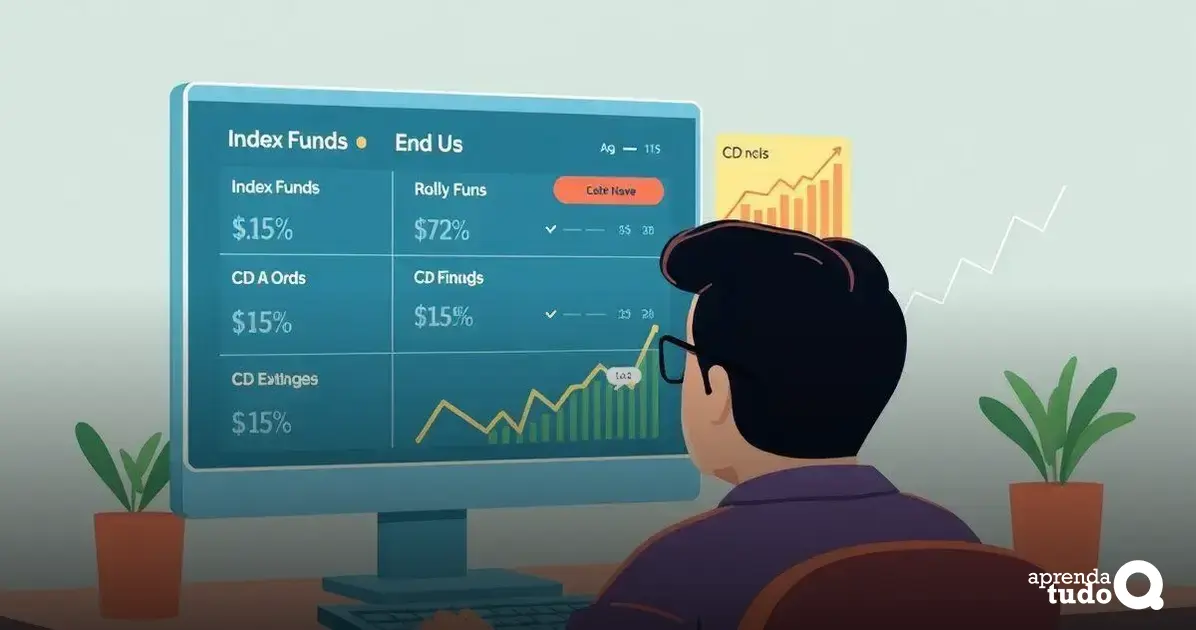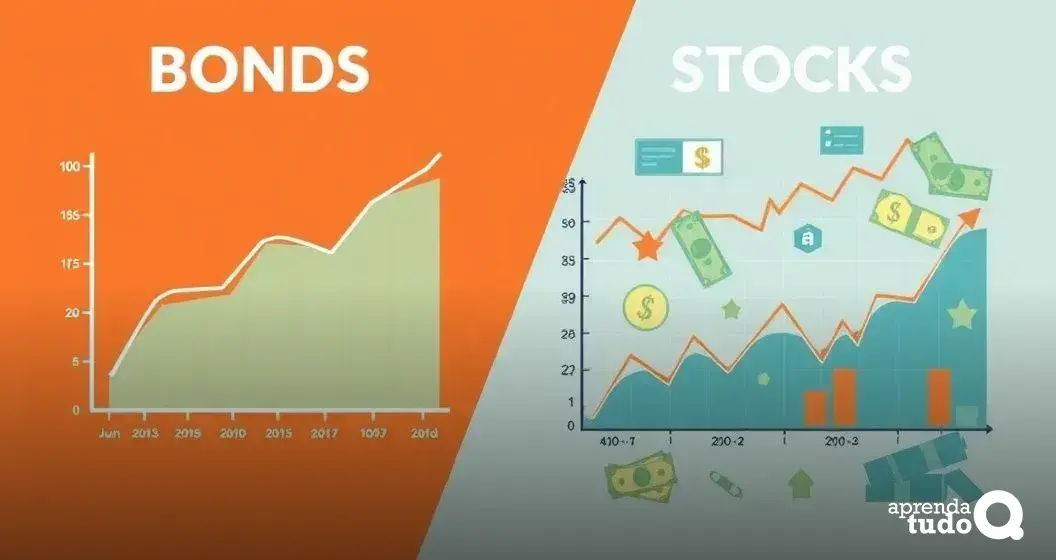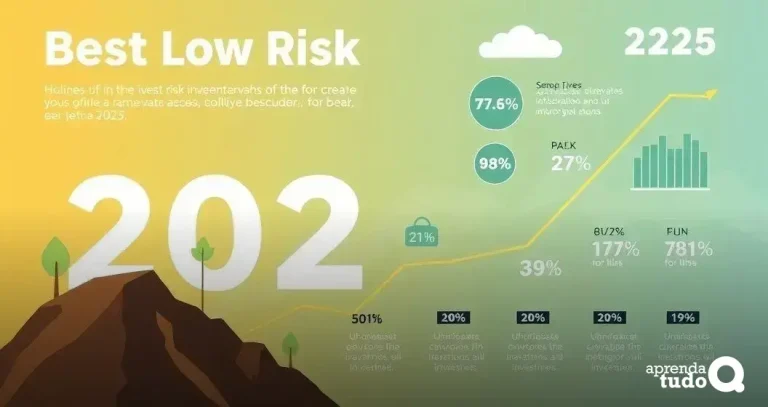Best Low Risk Investments 2025 are essential for anyone looking to grow their money safely this year. With smart choices, you can protect your funds while still seeing steady returns without the stress of high-risk options.
From bonds to real estate funds, low risk investments offer stability and predictability. They help you plan for the future while keeping your finances secure, even in uncertain economic times.
Understanding which options fit your goals can make a big difference in building wealth confidently. Keep reading to discover practical strategies and top low risk investments to consider in 2025.
Top 5 Low Risk Investment Options for 2025
In 2025, looking for low risk investment options is essential for smart financial planning. One great choice is bonds. These are loans you give to governments or companies, which pay you interest over time. Bonds are generally safer than stocks and can provide a steady income.
Another option is high-yield savings accounts. These accounts offer better interest rates than regular savings accounts. Your money remains safe while earning decent interest, making it a low-risk option for short-term savings goals.
Real estate funds are also trending in 2025. They allow you to invest in property without buying a house directly. These funds often spread your investment across various properties, reducing risk and providing potential steady returns. It’s a smart way to get into real estate without much hassle.
Why Choose Low Risk Investments?
Choosing low risk investments is a smart move for many people. These options provide safety for your hard-earned money, especially during uncertain economic times. When you opt for low risk investments, you can have peace of mind knowing your money isn’t likely to disappear overnight.
Moreover, low risk investments often come with more predictable returns. While they may not offer huge profits like higher-risk options, they can help you build your wealth gradually. This steady growth is ideal for those who want to save for things like retirement or a child’s education.
Lastly, low risk investments allow you to stay in control of your finances. With less worry about market swings, you can focus on your long-term goals without losing sleep. This balance of safety and opportunity makes low risk investments a wise choice for 2025.
Understanding Investment Risk Levels
Understanding investment risk levels is essential for any investor. Basically, investment risk means the chance of losing money or not making the expected returns. There are different levels of risk, which can help you decide where to put your money. Low risk investments, like bonds or high-yield savings accounts, usually offer safer choices with fewer ups and downs.
On the other hand, high risk investments, like stocks or cryptocurrencies, can provide big rewards but come with chances for losses too. It’s important to know your comfort level with risk before you start investing. This way, you’ll be better prepared for any surprises along the way.
By understanding these risk levels, you can create a balanced investment strategy. A mix of low, medium, and high-risk investments can help you grow your wealth while protecting against potential losses. The key is to find the right balance that suits your goals and helps you enjoy the journey of investing.
How to Evaluate Low Risk Investments

Evaluating low risk investments is a crucial step in ensuring your financial safety. Start by looking at the track record of the investment. Go for options that have a history of stable returns, especially during different market conditions. This can help you feel more confident that your money will be secure.
Next, consider the issuer’s credibility. For bonds, check the company’s or government’s credit rating. A higher rating means a lower chance of default, making it a safer choice for your investment. Loose ends may lead to unexpected risks.
Lastly, think about how the investment fits into your overall financial plan. Low risk investments should complement your existing portfolio and align with your goals. By evaluating each investment carefully, you can build a reliable strategy for your future.
The Impact of Inflation on Investments
Inflation has a big impact on investments. When inflation rises, the cost of goods and services increases. This means that the money you earn from your investments might not buy as much in the future. For example, if your investment grows by 3% but inflation is 4%, you’re effectively losing purchasing power.
Low risk investments can be affected by inflation as well. For instance, traditional savings accounts and bonds may not keep up with rising prices. If the interest earned is lower than the inflation rate, the value of your money shrinks over time. This is why it’s important to consider how inflation might influence your returns.
To protect against inflation, investors often look for options that can provide returns above the inflation rate. This may include certain types of stocks or real estate. By understanding the impact of inflation, you can make better decisions about which investments to choose for a secure financial future.
Investment Strategies for Beginners
Investment strategies for beginners can help you make smart choices with your money. A good starting point is to set clear financial goals. Knowing what you want to achieve, like saving for a house or retirement, can guide your investment decisions. This focus will empower you to select appropriate low risk investments that suit your plans.
Next, consider building a diversified portfolio. This means spreading your money across different types of investments, like bonds, stocks, and real estate. Diversification helps reduce risk because if one investment doesn’t perform well, others may do better, balancing your overall returns.
Lastly, remember to educate yourself as you invest. Read books, follow financial news, and consider using tools that help analyze investments. The more you learn, the better decisions you can make regarding low risk options in 2025 and beyond. Building your knowledge will make you a more confident investor.
Real Estate as a Low Risk Option
Real estate is often seen as a low risk investment option, making it appealing for many investors. Unlike stocks, which can fluctuate wildly, real estate tends to appreciate in value over time. This means that properties can provide a stable return through both value growth and rental income, which can be especially beneficial in 2025.
One major advantage of investing in real estate is the tangible asset aspect. Owning property gives you something physical that can be used, rented, or sold. This can be less stressful than worrying about the volatility of the stock market, adding a sense of security to your investment strategy.
Additionally, real estate investments often benefit from tax advantages. Many countries provide incentives for property owners, such as depreciation deductions or tax breaks on rental income. These benefits increase the overall stability of investing in real estate, making it a wise choice for those who prefer low risk options.
Bonds vs Stocks: What You Need to Know

When comparing bonds and stocks, it’s important to understand their key differences. Bonds are loans you give to companies or governments in exchange for interest payments. They are generally considered low risk because you will usually get your money back after a set period. On the other hand, stocks represent ownership in a company and can yield higher returns, but they come with greater risk due to market fluctuations.
Investors often choose bonds for their stability and fixed income, especially in uncertain times. In contrast, stocks can offer the potential for substantial growth. This means that if a company does well, your investment can increase significantly. However, if the company struggles, you could lose money. Knowing your risk tolerance is important in deciding which option suits you better.
For those focused on low risk investments in 2025, bonds may be a better fit. They provide reliable income with less volatility than stocks, making them ideal for conservative investors. However, a balanced portfolio can include both bonds and stocks for growth potential. Understanding your own financial goals can help you effectively navigate between these two investment types.
Future Trends in Low Risk Investments
Looking ahead, one of the future trends in low risk investments is the rise of . ESG stands for Environmental, Social, and Governance. Investors are becoming more socially responsible, wanting their money to contribute positively to the world. This trend could lead to stable returns as more companies embrace sustainable practices, making them better long-term investments.
Another trend to watch is the growth of real estate investment trusts (REITs). These allow investors to put money into real estate without buying property directly. As the demand for housing and commercial spaces continues to rise, REITs become an attractive low risk option, providing regular income through dividends and capital appreciation.
Lastly, the use of technology in investing is growing. Robo-advisors are becoming popular, as they help beginners invest their money efficiently with low fees. These automated systems create diversified portfolios based on individual risk preferences, making it easier to manage low risk investments for a stable financial future.





